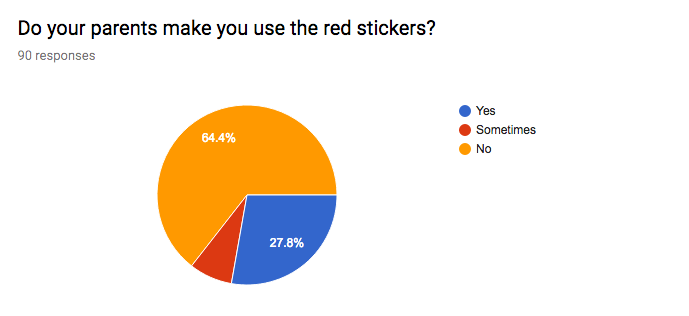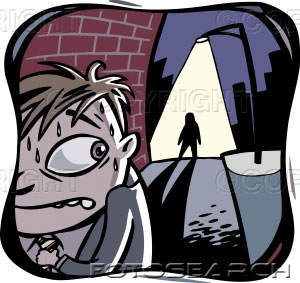The Problem
The problem began when Kyleigh D’Alessio died in a car crash on December 21, 2006. Kyleigh’s mom wanted to create a teen decal program in the U.S. to try to protect teens from fatal crashes. The purpose of the law is to protect young drivers, but it seems to be having the opposite effect.
However, many people have different points of views on this problem as many say the law allows police officers and dangerous predators to target young drivers. Many have spoken out against Kyleigh’s law, forming Facebook groups in an effort to try to pass new legislation to get rid of the law (McArdie 1).
Paul Loriquet, a communications director of the Attorney General discussed an incident involving a dangerous predator and a young teen a year after the decals became a requirement. A teen was stopped on the roads a not having decals; however, the person who stopped the teen was not part of law enforcement. The incident involved an individual who was impersonating a police officer (“Kyleigh’s Law: Should We Protect NJ Teens" 1). Kyleigh’s Law leaves teens vulnerable to dangerous predators and law breakers.
The Problem
The problem began when Kyleigh D’Alessio died in a car crash on December 21, 2006. Kyleigh’s mom wanted to create a teen decal program in the U.S. to try to protect teens from fatal crashes. The purpose of the law is to protect young drivers, but it seems to be having the opposite effect.
However, many people have different points of views on this problem as many say the law allows police officers and dangerous predators to target young drivers. Many have spoken out against Kyleigh’s law, forming Facebook groups in an effort to try to pass new legislation to get rid of the law (McArdie 1).
Paul Loriquet, a communications director of the Attorney General discussed an incident involving a dangerous predator and a young teen a year after the decals became a requirement. A teen was stopped on the roads a not having decals; however, the person who stopped the teen was not part of law enforcement. The incident involved an individual who was impersonating a police officer (“Kyleigh’s Law: Should We Protect NJ Teens" 1). Kyleigh’s Law leaves teens vulnerable to dangerous predators and law breakers.
|
In the last 3 years, there have been over 200 reports of suspicious vehicles following teens with decals. In 57% of those cases, the person following the teen maintains a criminal record (St Martin 1). These scary situations have been catching the eyes of many parents as well as teens in regards to the safety of these young drivers. It has become a very controversial debate that affects not only the drivers but their parents, other drivers on the roads, and law enforcement officers (Hochman).
|
A recent statistic shows that “Graduated Driver Licensing-related citations to intermediate drivers increased by 14 percent in the first year after Kyleigh's Law went into effect” (Hochman). This fact clearly states that more teens than ever are being pulled over because of the red decals. The decals are clearly a marker for police officers to target young drivers. Many police departments and officers say that driver discrimination does not exist against young drivers with the red stickers. However, many argue that “it is only a matter of time before a teenager is bumped on the highway or stalked in a dark parking lot” (Phalon).
Others worry about the other aspects of the law: “This scarlet letter sticker is the most striking and unique part of this law, but there are questions about its other provisions as well. The law bans provisional license holders under 21 from using a cell phone entirely, no matter if they are talking, texting, or using a hands-free device. Obviously the last thing New Jersey wants a young girl to do after a creepy van spots the sticker and starts following her is to call for help” (Koroknay-Palicz). Many would argue that this is a minuscule problem as they may claim it only affects teens in New Jersey, but a problem that affects more than 100,000 teens is too large to be left unsolved.
The following is an example of a young driver being targeted: “Minutes after Sara Murphy, 17, pulled out of her Warren home with the stickers affixed to her car, a police officer stopped her. Murphy said the officer asked if she was using a cell phone or iPod because he saw a light emanating from her car. When she told him she wasn’t — she said her passenger was using the iPod — she got a $54 ticket for view obstruction for an air freshener and a guardian angel that hung from her rearview mirror. Her mother, Kathy Karolis, said her daughter was targeted because of the decal” (St. Martin). The purpose of the restrictions for younger drivers is to “keep young drivers out of high-risk situations”. While it makes sense to require everyone to wear seat belts or eliminate the use of handhelds while driving, these are things people should do all the time--regardless of age.

In truth, a red decal will not do anything to “keep young drivers out of high-risk situations” (Hochman). The current policy requires all people with probationary licenses under 21 in New Jersey to display red $4 decals on their front and rear license plates. Under the law, teens are restricted from driving between 11:01 pm and 5:00 am and are only allowed to have one other passenger and dependents in the vehicle unless in the presence of a 21 year old or parent/guardian. The fine for not using the red decals is $100. The current policy allows for profiling of younger drivers, causing disagreements over the actual effectiveness of the law. According to a recent untitled survey--to keep from being biased-- 64% of parents do not require their children to use the red decals (Google Survey). Nature of disagreements stem from Kyleigh’s death and her mother’s fight for years to get the law passed.
This law only exists in NJ, so the problem isn’t too large to be handled. The formation of the law was caused by the car accident involving Kyleigh D’Alessio and the actions her mother took to avenge her death (St. Martin). She felt that teen drivers should be pointed out to others on the road to promote very safe and cautious driving by others to ensure everyone's safety (McArdie 1).
A similar procedure was put in place in Florida to identify rental cars, which resulted in murders and carjackings in 1993. After the crime rates increased because of the markings, "Florida state legislature implemented a law to remove all identifying decals, stickers, or advertising that marked vehicles as rentals" (Gray 149). The solution in place is flawed. NJ Lawmakers must overturn the law that was proposed by Donna Weeks.
The state of Connecticut has also considered and rejected the implementation of a law requiring decals: “Connecticut rejected this proposal during the planning stages of the legislative process after employing public opinion surveys at subcommittee meetings. For much of the same reasons that New Jersey constituents protested the law, Connecticut citizens informed their elected representatives that such a law would meet fierce opposition” (Gray 148). Had New Jersey representatives done public opinion surveys, it is possible that the findings would be similar to those of Connecticut.
Without the help of the government, young drivers will still technically be forced to use the red decals. Until the law is repealed or amended, nothing can be done aside from peaceful protesting. While the law is unconstitutional, the fear of breaking a law still hangs over peoples' heads. According to Allison Curry’s data analysis, “There were no changes in overall crash trends” in the year following the law’s implementation (Hochman). If the crash trends did not change, then the law is not doing it's job.
A similar procedure was put in place in Florida to identify rental cars, which resulted in murders and carjackings in 1993. After the crime rates increased because of the markings, "Florida state legislature implemented a law to remove all identifying decals, stickers, or advertising that marked vehicles as rentals" (Gray 149). The solution in place is flawed. NJ Lawmakers must overturn the law that was proposed by Donna Weeks.
The state of Connecticut has also considered and rejected the implementation of a law requiring decals: “Connecticut rejected this proposal during the planning stages of the legislative process after employing public opinion surveys at subcommittee meetings. For much of the same reasons that New Jersey constituents protested the law, Connecticut citizens informed their elected representatives that such a law would meet fierce opposition” (Gray 148). Had New Jersey representatives done public opinion surveys, it is possible that the findings would be similar to those of Connecticut.
Without the help of the government, young drivers will still technically be forced to use the red decals. Until the law is repealed or amended, nothing can be done aside from peaceful protesting. While the law is unconstitutional, the fear of breaking a law still hangs over peoples' heads. According to Allison Curry’s data analysis, “There were no changes in overall crash trends” in the year following the law’s implementation (Hochman). If the crash trends did not change, then the law is not doing it's job.

